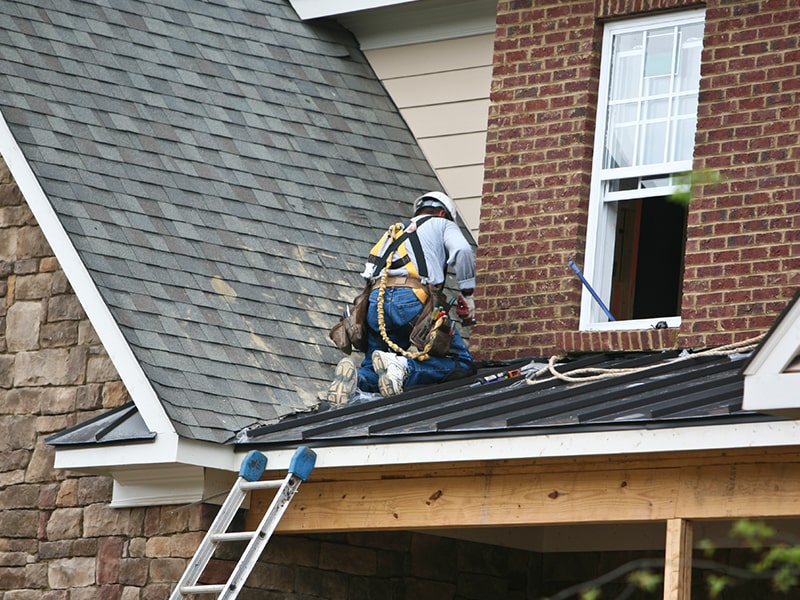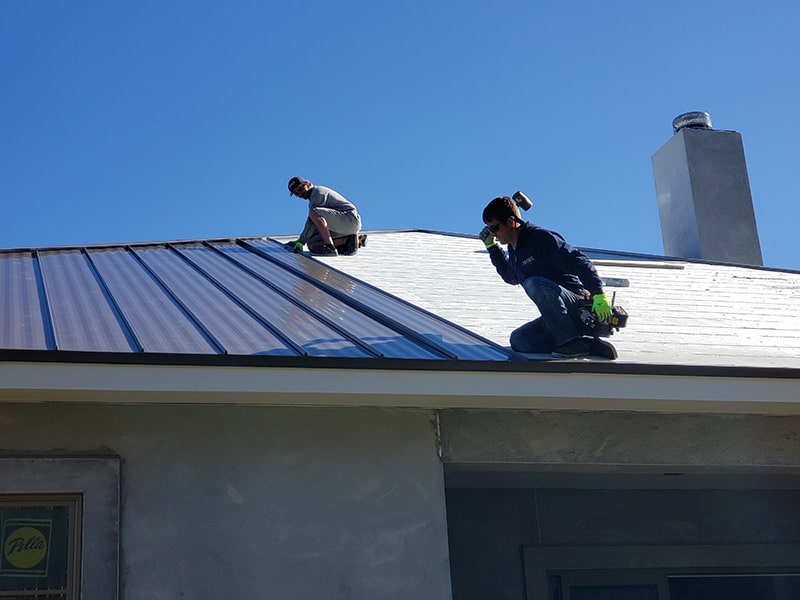The main condition for the qualitative performance of the roofing the work of an experienced professional, strict compliance with the technology and these instructions from manufacturers of roofing or other building materials.
The roofer of high qualification with great experience not only successfully performs his work, but also knows how to properly assess the quality of the performed rafter construction and the work of previous masters. The specialist can identify shortcomings that will prevent further installation of coverings.
The most popular material
Ruberoid is the most suitable material to arrange the roof of any building (residential, household). It is notable for its affordability and ease of installation on almost any surface. Its application is practical and profitable, as it does not require complicated maintenance.
To properly carry out work on the arrangement of the roof, you need both quality materials and professional knowledge. Otherwise, during operation, there may be stratification and destruction of the material, which contributes to the accumulation of moisture at the base and leads to the loss of basic properties of roofing felt.

Process disruption
The process of covering with roofing felt should be carried out, step by step. It is not usually glued, but in winter conditions, with a slight slope of the roof, it is recommended to glue it, for which mastics are used. To fix a roofing felt, you will need metal aluminium or steel tape. For fixing it is possible to use laths with steps up to 50 cm.
Cover the roof from bottom to top. Each roofing felt sheet is laid overlapped and glued so that no water can enter the joints in the future. The size of the overlap depends on the degree of slope of the roof. If the slope is larger, the overlap is smaller – between 7 cm and 20 cm. Before laying roofing felt, it must be cut into pieces of a certain length.
Errors in calculation
When calculating the required number of layers of ruberoid material, take it into account:
- period of operation of the roof;
- roof pitch;
- roof pitch, laying material.
To ensure that the roof with a 45 degree slope is used longer, lay several layers of roofing felt at once. A roof with a slope of 20-30 degrees, which plans to operate about 15 years, needs at least 3 layers of roofing felt. In this case, the two lower layers are prostilivnyh, and when laying the top piece, use stone chips.
If the roof pitch is less than 15 degrees, four perpendicularly laid roofing felt layers are used. Fully flat roofing is covered with roofing felt in 5 layers, which are glued and laid in perpendicular order.
Preparatory work
All roofing work is carried out exclusively in dry and clear weather. In rare cases, it is possible to work under a roof. However, too high humidity can prevent the material from being glued. The substrates under the roofing felt must be very flat.
In order to cover a flat concrete roof with roofing material, it is necessary:
- Make a reinforced screed. This will allow snow to slide off the roof easily.
- The dry cleaned screed is covered with bituminous mastic (instructions for laying are given by the manufacturer on the jar).
If the mastic is slightly “grabbed” with the surface, the screed starts to glue the roofing material.
In case of a slight slope, a continuous batten made of planks, plywood or chipboard is produced for the roof. In this case, the snow will not squeeze the fabric and the structure of the roofing felt will not collapse. At a slope of 30 to 40 degrees, you can install not a continuous form of purlins, and with a clearance of no more than 30 mm.
To perform purlins for pitched roof, from the attic side, between the trusses, the board is promoted, and fastened to the farm. In this case, the purlins will be slightly larger than the width of the roll. The purlins are smeared with mastic and a layer of roofing felt is laid from above, parallel to the edge of the roof. Slate nails are used as fasteners. Next, install subsequent layers of purlins, until the full completion of this stage of work.
Use of mastic
Mastic in cans can be used without pre-melting. It does not crack, and very well glues the roofing felt to the base. Negative characteristics of the mastic until it is completely dry – unpleasant smell and fire dangerous condition of the surface.
The application of bituminous resin requires its melting, which creates danger and inconvenience for the working personnel. When the bitumen is diluted with gasoline to produce a consistency in the form of kissel, used engine oil is added to the resin, which is purchased from service stations.


